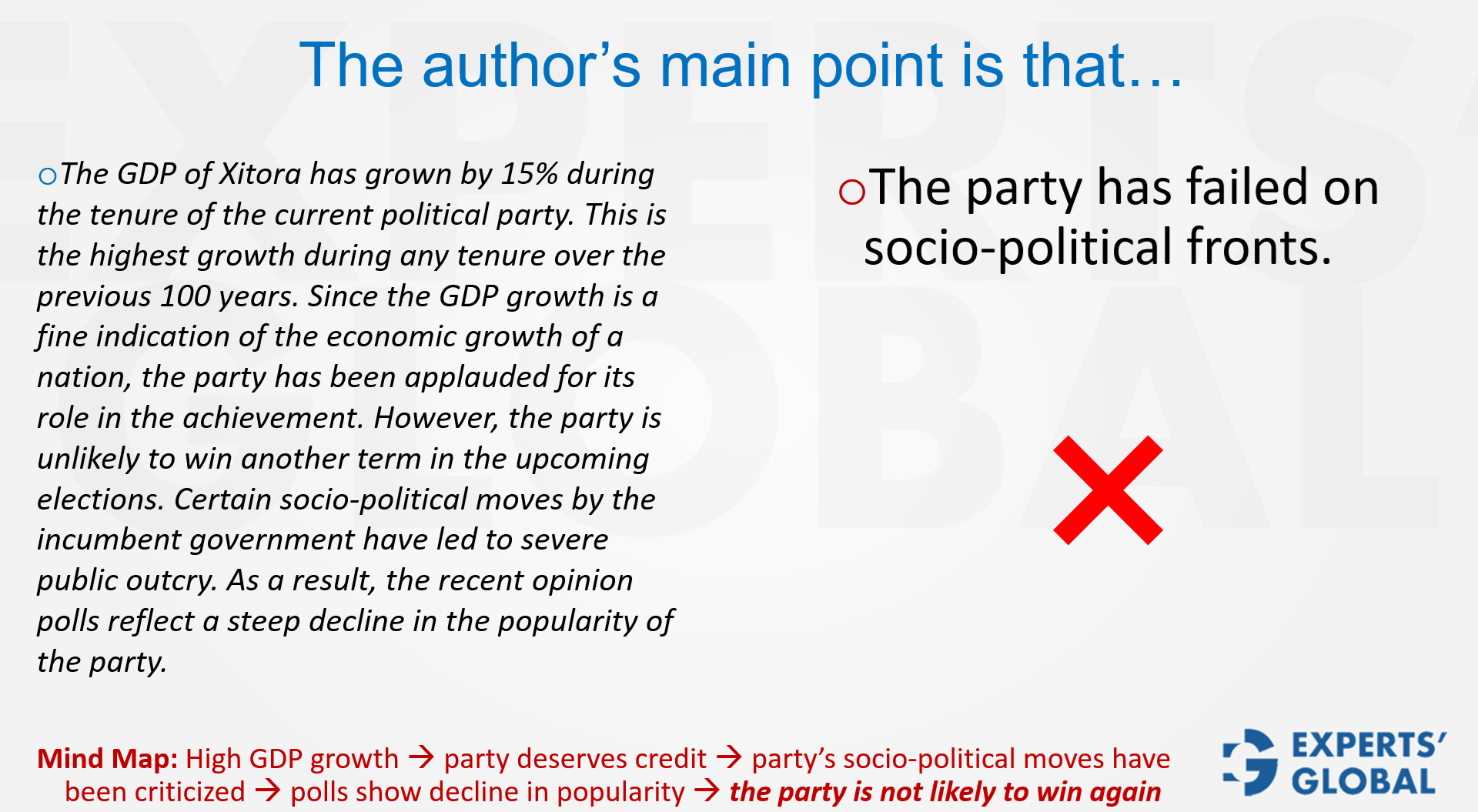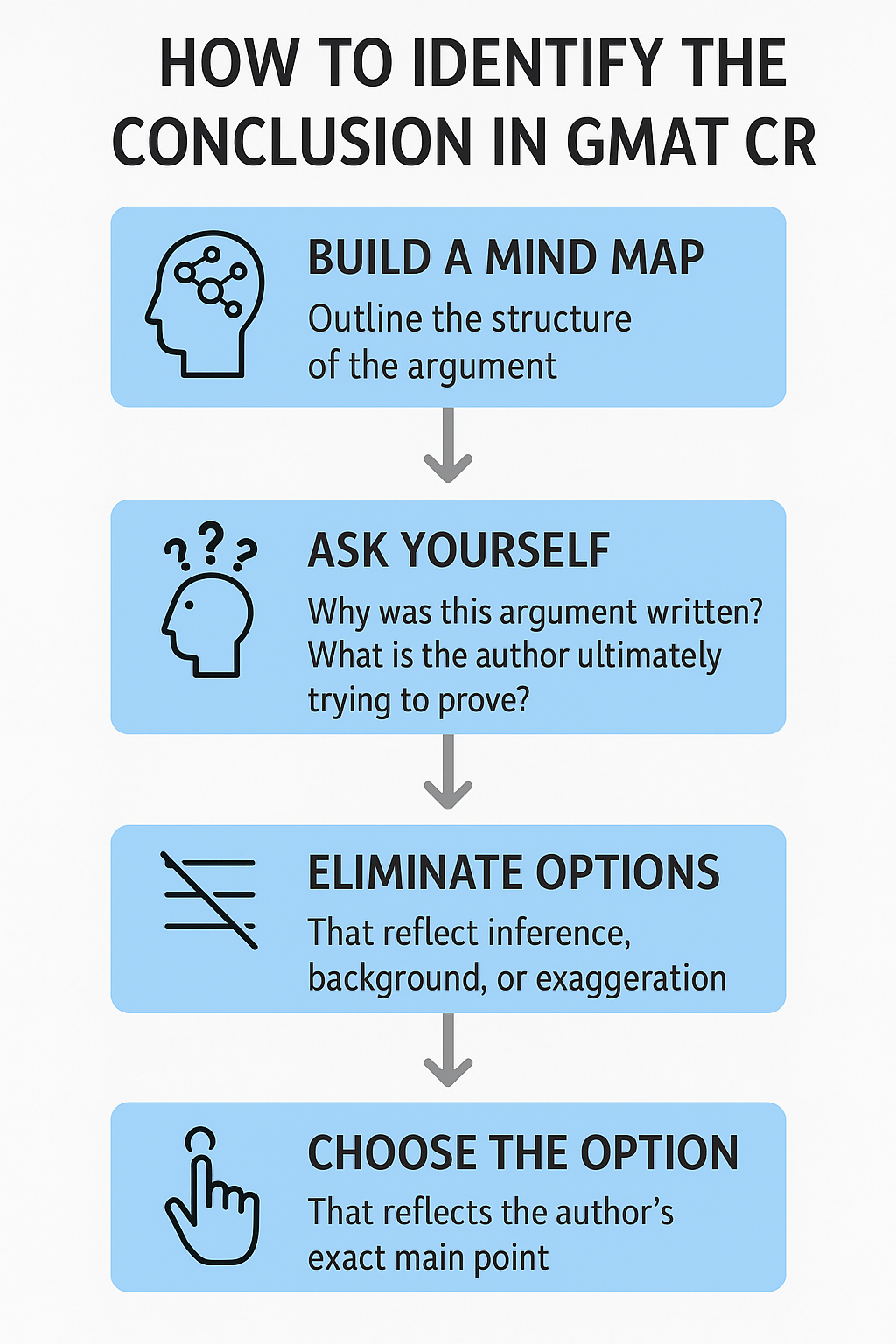Invest 30 seconds...
...for what may lead to a life altering association!
Help Line
- +91.8800.2828.00 (IND)
- 1030-1830 Hrs IST, Mon-Sat
- support@expertsglobal.com
...for what may lead to a life altering association!


Conclusion questions on GMAT’s critical reasoning: identify the author’s “main point”, not background facts or mere inferences. Build a quick mind-map, ask what the argument is trying to prove, and beware extremes like “definitely.” The conclusion may appear anywhere; choose the statement that the premises aim to establish!
This overview clarifies how to identify a conclusion in GMAT’s conclusion-based critical reasoning: the author’s central claim that the premises aim to establish. Build a concise mind-map of facts and opinions, ask what the argument is trying to prove, and prefer precise wording over extremes. Remember, conclusions can appear anywhere in the passage and need not be signposted. The video and article outline tests and examples for disciplined reading, supporting evidence-based study in GMAT prep and structured reasoning valued in MBA admissions.

Critical Reasoning on the GMAT often demands precision in thought. One of the important question types is the conclusion question, where you are asked to identify the author’s main point. The correct answer is the central claim that the argument is trying to establish, not just a detail, example, or inference.

Expect a meaty passage with layers, twists, and turns. Your task is to select the answer choice that states the main point of the argument.

Correct Answer: B
Many students assume that the last sentence must always be the conclusion or that words like “therefore” or “as a result” guarantee the conclusion. These are traps. The author’s main point may be placed anywhere, and sometimes the true conclusion only becomes clear after carefully connecting all the ideas.

Consider this reasoning:
“The GDP of Xitora has grown by 15% during the tenure of the current political party. This is the highest growth during any tenure over the previous 100 years. Since the GDP growth is a fine indication of the economic growth of a nation, the party has been applauded for its role in the achievement. However, the party is unlikely to win another term in the upcoming elections. Certain socio-political moves by the incumbent government have led to severe public outcry. As a result, the recent opinion polls reflect a steep decline in the popularity of the party.”
We need to find the main point of the argument.
When faced with this, a student might be tempted by answer choices such as:
None of these are correct conclusions.
The true conclusion is: The party is unlikely to win the upcoming elections.
This is the main point the author was working toward.

GDP growth or criticism from the public are supporting details, not the author’s main point.
A decline in popularity can be inferred, but it is not the author’s main message.
Saying the party “will definitely lose” is stronger than the author’s actual conclusion, which is that the party is “unlikely to win.”
The conclusion is the backbone of the argument. If you misidentify it, you risk losing sight of the reasoning altogether.
Conclusion questions ask you to identify the author’s main claim, not background details or tempting inferences. The correct conclusion is the point that the premises aim to prove, often framed with cautious rather than extreme language. Effective strategies include building a mind map, filtering out context, and asking what the argument is ultimately written to establish. Practicing this approach in GMAT simulations reinforces clarity, sharpens reading discipline, and improves accuracy in handling conclusion-based Critical Reasoning questions.
Learning to identify the true conclusion is a reminder that clarity often lies beneath layers of detail and distraction. In GMAT preparation, this skill teaches you to distinguish core meaning from supporting noise, focusing on what truly drives the argument. In MBA applications, the same principle applies when crafting essays or interviews—admissions committees value applicants who can present a central message with precision. In life, too, progress depends on recognizing the heart of an issue. Each GMAT mock nurtures this discipline, refining focus and judgment beyond the exam.